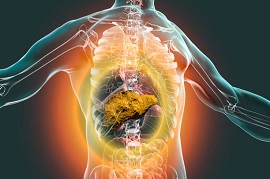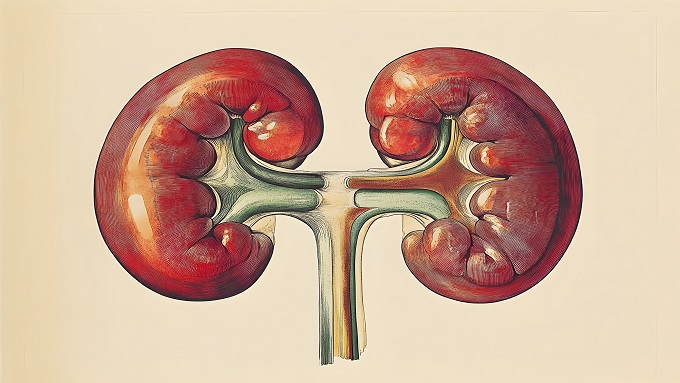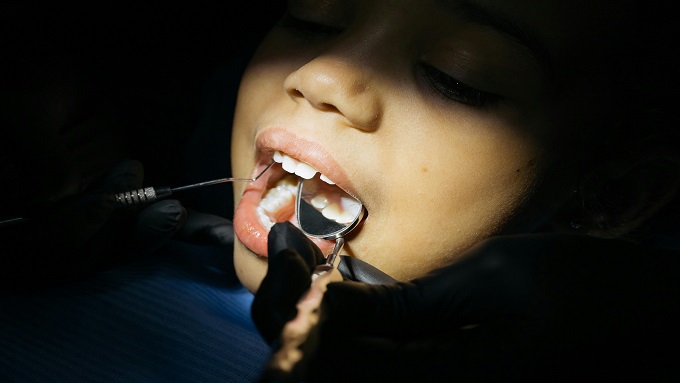AST TO PLATELET RATIO INDEX (APRI) AND DEGREE OF SEVERITY BASED ON CHILD-PUGH CLASSIFICATION AMONG CIRRHOSIS PATIENTS AT INTERNAL MEDICINE WARD IN A TERTIARY HOSPITAL

Downloads
Highlights:
1. The Child-Pugh score is an instrument to assess the degree of severity and prognosis of chronic liver disease.
2. the rise in APRI score may predict the advance of cirrhosis stages.
Abstract:
Background: Simple diagnostic and screening methods are needed to assist with liver biopsy, which is not always available in local health facilities. Objective: To assess the AST-to-Platelet Count Index (APRI) as a means to predict the advance of cirrhosis stages as indicated in Child-Pugh classification. Material and Method: This research employed an observational descriptive study design to examine laboratory values such as serum AST and platelet count, which were then compared to Child-Pugh profiles among cirrhosis patients at an inpatient facility in a tertiary hospital of Dr Soetomo General Academic Hospital, Surabaya, Indonesia on 1 January – 31 December 2015. The sampling method for this research was total sampling from medical histories. Result: Data obtained were then analyzed and tabulated using the descriptive technique. As many as 191 samples were obtained, consisting of male (N=129, 67.54%) and female patients (N=62, 32.46%) with a ratio of 2.08:1. APRI score showed an increase in age, with a peak frequency of 68 patients (35.6%) in the range 50-59 years old. Male patients had a higher average APRI score (2.11) than their female counterparts (1.93). Patients from Child C were the majority in this research, consisting of 105 patients (54.9%), followed by Child B (N=65, 34.03%) and A (N=21, 10.9%). Conclusion: The proportion of patients with APRI score > 1.5 is increasing along with the degree of severity according to the Child-Pugh classification. This indicates that the rise in APRI score may predict the advance of cirrhosis stages.
Anugwom, C. Ashraf, A. Debes, J.D., 2020. Virus-mediated thrombocytopenia in hepatitis C infection: The impact on fibrosis scores. Digestive and Liver Disease, 52(7): 797-798. doi:10.1016/j.dld.2020.04.027.
Balduini, C.L. & Noris, P., 2014. Platelet count and aging. Haematologica, 99(6). doi: 10.3324/haematol.2014.106260.
Bao, X.Y., Xu, B., Fang, K., Li, Y., Hu, YH., Yu, GP., 2015. Changing trends of hospitalisation of liver cirrhosis in Beijing, China. BMJ Open Gastroenterology, 2(1), p. e000051. doi: 10.1136/bmjgast-2015-000051.
Biino, G. Santimone, I. Mineli, C. Sorice, R. Frongia, B. Traglia, M. 2013. Age and sex-related variations in platelet count in Italy: A proposal of reference ranges based on 40987 subjects' data. PLoS ONE, 8(1): e54289. doi: 10.1371%2Fjournal.pone.0054289.
Cheng, C.H. Chu, C.Y. Chen, H.L. Lin, I.T. Wu, C.H. Lee, Y.K. et al., 2020. Subgroup analysis of the predictive ability of aspartate aminotransferase to platelet ratio index (APRI) and fibrosis-4 (FIB-4) for assessing hepatic fibrosis among patients with chronic hepatitis C. Journal of Microbiology, Immunology and Infection, 53(4): 542-549. doi: 10.1016/j.jmii.2019.09.002.
Deng, H. Qi, X. Peng, Y. Li, J. Li, H. Zhang, Y. et al., 2015. Diagnostic accuracy of APRI, AAR, FIB-4, FI, and king scores for diagnosis of esophageal varices in liver cirrhosis: a retrospective study. Medical Science Monitor, 21: 3961–3977. doi: 10.12659/msm.895005.
Eicher, J.D. Lettre, G. Johnson, A.D., 2018. The genetics of platelet count and volume in humans. Platelets, 29(2): 125–130. doi: 10.1080%2F09537104.2017.1317732.
Huang, C. Sieh, J.J. Tan, C.K. Kam, J.W. Tan, J. Teo, E.K. et al., 2021. Modified AST to platelet ratio index improves APRI and better predicts advanced fibrosis and liver cirrhosis in patients with non-alcoholic fatty liver disease. Clinics and Research in Hepatology and Gastroenterology, 45(4). doi:10.1016/j.clinre.2020.08.006.
Laouina, A. Abouyoub, A. Soulaymani, A. Alami, R., 2012. Alanine transaminase level in a healthy population in Morocco. Pakistan Journal of Biological Sciences, 15(5): 238–43. doi: 10.3923/pjbs.2012.238.243.
Liaw, Y.F. Brunetto, M.R. Hadziyannis, S., 2010. The natural history of chronic HBV infection and geographical differences. Antiviral Therapy, 15(Suppl 3): 25–33. doi: 10.3851/IMP1621.
Mao, W. Sun, Q. Fan, J. Lin, S. Ye, B., 2016. AST to platelet ratio index predicts mortality in hospitalized patients with hepatitis B-related decompensated cirrhosis. Medicine (Baltimore) Journal, 95(9): e2946. doi: 10.1097/MD.0000000000002946.
Mokdad, A.A. Lopez, A.D. Shahraz, S. Lozano, R. Mokdad, A.H. Stanaway, J. et al., 2014. Liver cirrhosis mortality in 187 countries between 1980 and 2010: A systematic analysis. BMC Med, 12(145). doi: 10.1186/s12916-014-0145-y.
Neamatallah, T. Abdel-Naim, A.B. Eid, B.G. Hasan, A., 2019. 2-Methoxyestradiol attenuates liver fibrosis in mice: Implications for M2 macrophages. Naunyn-Schmiedeberg's Archives of Pharmacology, 392(3): 381–391. doi: 10.1007/s00210-018-1577-2.
Oren, T., 2014. Liver metabolism and fatty liver disease. 1st Editio. Boca Raton: CRC Press. doi: 10.1201/b17315.
Peleg, N. Issachar A. Sneh-Arbib, O. Shlomai, A., 2017. AST to platelet ratio index and fibrosis 4 calculator scores for non-invasive assessment of hepatic fibrosis in patients with non-alcoholic fatty liver disease. Digestive and Liver Disease, 49(10): 1133-1138. doi: 10.1016/j.dld.2017.05.002.
Peng, Y., Qi, X., Guo, X. 2016. Child-pugh versus MELD Score for the assessment of prognosis in liver cirrhosis: A systematic review and meta-analysis of observational studies. Medicine (Baltimore) Journal, 95(8): e2877. doi: 10.1097/MD.0000000000002877.
Ruf, A. Dirchwolf, M. Freeman, R.B., 2022. From child-pugh to meld score and beyond: Taking a walk down memory lane. Annals of Hepatology, 27(1). doi: 10.1016/j.aohep.2021.100535.
Schiff, E.R. Maddrey, W.C. Sorrell, M. F., 2011. Schiff's diseases of the liver in. John Wiley & Sons. Available at: https://books.google.co.id/books?id=HsxFSx_B4sUC.
Shiffman, M.L. (ed.)., 2011. Chronic hepatitis C virus: Advances in treatment, promise for the future. New York: Springer New York.
Zhao, Y. Thurairajah, P.H. Kumar, R. Tan, J. Teo, E.K. Hsiang, J.C., 2019. Novel non-invasive score to predict cirrhosis in the era of hepatitis C elimination: A population study of ex-substance users in Singapore. Hepatobiliary & Pancreatic Diseases International, 18(2): 143-148. doi: 10.1016/j.hbpd.2018.12.002.
Copyright (c) 2022 Winanda Denis Kurniawan, Budi Widodo, Betty Agustina

This work is licensed under a Creative Commons Attribution 4.0 International License.
1. The journal allows the author(s) to hold the copyright of the article without restrictions.
2. The journal allows the author(s) to retain publishing rights without restrictions.
3. The legal formal aspect of journal publication accessibility refers to Creative Commons Attribution 4.0 International License (CC-BY).
































